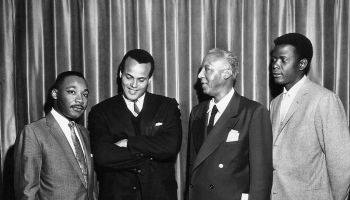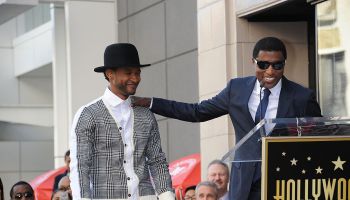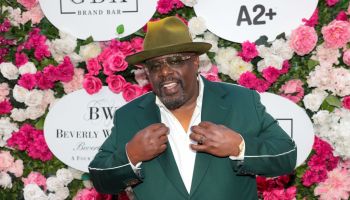Ava DuVernay’s masterful storytelling in the upcoming film Selma transports audiences back to the Civil Rights era, a period of political unrest and progress that resonates now more than ever.
Since early August, when Michael Brown Jr., a black unarmed 18-year-old, was killed by Darren Wilson, a white police officer in Ferguson, youth in St. Louis have sparked a movement against police brutality and systemic racism.
On November 24, after months of tension and anticipation, the grand jury decided not to indict Wilson. Cities across the U.S. have since mobilized in solidarity with Ferguson but also to raise awareness about the state-sanctioned violence occurring in their respective locales. A week later the police officer that choked unarmed Eric Garner to death also avoided charges, another slap in the face to the public that officers are paid to protect and serve. The presence of police brutality and excessive force and absence of accountability have urged people to unify and demand justice.
If you’ve followed DuVernay on social media throughout the process of making the film, you know she has continually shared information about Ferguson and used her platform to connect the dots between her masterful creation and the harsh reality of racism that still exists and threatens lives. And because of the parallels DuVernay is able to make between present and past, Selma resonates as a labor of love and tribute to the heroes and architects of justice that are collectively the Civil Rights Movement — not only Martin Luther King Jr. but the old, the young, the male, the female, the black and white who decided, like King (played by the talented Davis Oyelowo) says in the film, “to stand up and say enough is enough.”
It’s clear — the characters and courage displayed in Selma laid the foundation for the resurgence of activism currently taking place across the US.
While many Civil Rights films portray legends that are difficult to relate to and view as mortal, DuVernay invited audiences behind closed doors to King’s inner circle where the strength of the story and movement comes through. It’s one thing to imagine myth-like tales of irreplaceable leadership but another to realize that everyday people led by conviction accomplished so much while dealing with human fears and struggles. Selma deconstructs the movement’s iconic imagery and focuses on the individuals. In the midst of moving speeches and daring protests, people share meals, make mistakes, crack jokes, and forge bonds- strangers become family. Through these intimate moments, the audience feels the heartbeat of the movement — Love. A love that unifies, nourishes, and sustains, even through blows to the body as police attempt to strip freedom fighters of their humanity, and in turn reveal themselves as savages. Even in quiet moments as characters hug or link arms, there is an unmistakable power in their relationships. The love depicted in Selma that also leads youth in Ferguson, is so potent and undeniable it shames those who attempt to paint blackness as criminal and unworthy of dignity.
In DuVernay’s education of an era, her depiction of young activists serves as a vivid reminder of the sincerity and bravery of those who are willing to risk their lives for change. As I absorbed the film, I couldn’t help but think of our current youth on the frontlines fighting for racial equality– as we are beneficiaries of revolutionaries of the past, we also inherit a responsibility to continue the fight for justice, which first requires the acknowledgement of the injustices of our time.
Now, Ferguson organizers are not only grabbing the torch but sifting through fragments of dismantled movements as they develop their own visions and strategies.
Then and Now
Selma and Ferguson are many moons apart, but several scenes in particular reflect existing threats to freedom and equality. King gives a eulogy and lists the people whose fingers were on the trigger that killed a young protester. I couldn’t help but think of all the fingers that pulled the trigger that killed Mike Brown, that killed Vonderitt Myers, that killed John Crawford, that killed Ezell Ford, that killed Oscar Grant and countless other black men and women.
The film includes scenes where King tactically confronts president Lyndon Johnson, stating that no one has been held accountable for the deaths and beatings of black southerners. King also mentions how dishonorable it is that the President of United States deploys troops abroad while Americans are being brutalized and denied freedom on U.S. soil. As a majestic scene follows activists crossing the bridge in Selma to the song “Masters of War,” I couldn’t help but think of all the politicians and pastors sitting on their hands at this very moment, carrying on their daily neglect and corruption while our youth continue to be killed in the streets and organizers are vilified and targeted by authorities.
In the film thousands of people flocked to the second Selma march in solidarity, similar to Ferguson October. Characters commented that authorities backed down because of the presence of the white privilege of allies; the same sentiment was echoed in the unequal treatment that white and black protesters have received in Ferguson. A young and dashing Harry Belafonte could be spotted in an archival montage; he recently paid a visit to Ferguson activists to encourage them in their work: the continuation of a lineage of excellence, resistance, and artistry.
Shining “Glory”
The film in and of itself is bold statement and challenge to the film industry, where the talent of women and minorities is often stifled by the excuse that audiences won’t understand or support their work. Alfre Woodard, who moderated a discussion following the screening, jokingly alluded to these barriers when she asked Plan B how they were ever going to sell the film internationally.
As the discussion continued it became apparent that a project like Selma doesn’t just happen, but is the product of compassionate creators’ tireless effort and collaboration. Everyone involved had to believe in each other’s ability and vision (especially Oyelowo’s) to pull off such an epic film that defies so many industry barriers.
When Woodard asked Oyelowo how he connected to the role and Civil Rights Movement as an actor and citizen, he said:
“I have had the privilege to live on three continents as a black person. The first place was Europe, England and then it was back to motherland Nigeria where I lived for seven years, and now I’ve lived here for seven years. And the thing I learned living in Nigeria is exactly what Lorraine Toussaint says in the film, that we are born of kings and we are a people of deep pride, incredible culture and indescribable power. And unfortunately on the continents of both Europe and America that has been denigrated over time. And I don’t think it’s any accident that somehow this great man’s name was King.”
Common also spoke about his involvement as an actor and musician for the song that plays over the closing credits.
“I was blessed to be a part of Selma as an actor and experienced like so much inspiration and motivation getting to meet ambassador Andrew Young, John Lewis, working with Ava and the cast. Every cast member just brought so much spirit and soul, was so passionate. And getting to hang out with Oprah Winfrey. All those things inspired me. It’s something about when you really love things and I really love this project. I love it like with all my heart and soul so I just wanted to be a part of it in anyway.”
Common added that he knew he wanted to bring in John Legend for the song. Common gave John Legend different song ideas but they landed on “Glory” because it perfectly summed up the film.
“I just knew what the soul of this movie is and what the soul of the movement is because we lived it and got to experience it… We also realized that the song was really dealing with the present because at the same token as we were talking about what was going on in Selma, we could look on the TV and see what was going on in Ferguson,” Common said.
The glory of brothers and sisters in Selma shone through the hatred of white supremacy and racism, and continues to propel activists forward and shine in St. Louis today making the film a must see to understand the role history will play in this current movement.
Michelle Zei is a freelance multimedia journalist. Her interests include HIV/AIDS, the Palestinian-Israeli conflict, millennial activism and immigration. She believes in the power of the pen and the web to educate and unify communities. Connect with her on Twitter @michellezei
PHOTO CREDIT: Getty

















